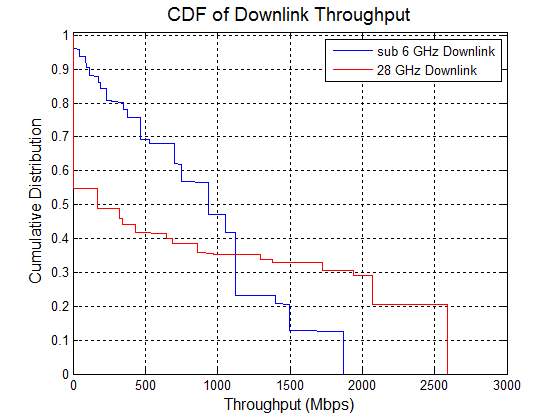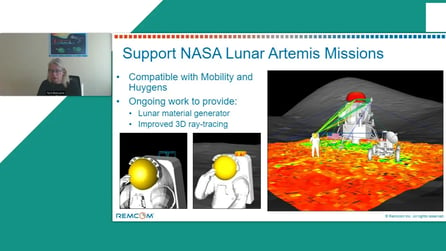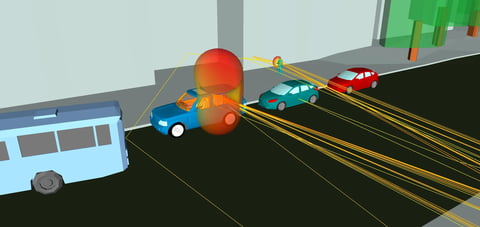5G Millimeter Wave Frequencies and Mobile Networks Technology Whitepaper
A whitepaper report on 5G mmWave frequencies and mobile networks published by the International Wireless Industry Consortium (IWPC).
Drawing on expertise from participants at 14 technology leaders in the wireless industry, including carriers, operators, device manufacturers, and providers of wireless simulation tools, IWPC created a comprehensive report that identifies the key features, obstacles, and potential solutions for deployment of mmWave for 5G. Remcom contributed to the whitepaper by applying expertise in wireless propagation and electromagnetic simulation, as well as analyzing throughput in a complex downtown urban scenario using Wireless InSite 3D Wireless Prediction Software.
>> Read our presentation describing Remcom's coverage analysis results here...
Recent 5G standards have set forth goals that include the ability to accommodate growing numbers of users, higher data rates, lower latency, and prolonged device battery life, among others. The use of mmWave frequency bands is one proposed technology to support the more robust mobile networks that will be required to meet these demands; however, there are challenges that must be explored for this new use case, particularly for mobile device applications.
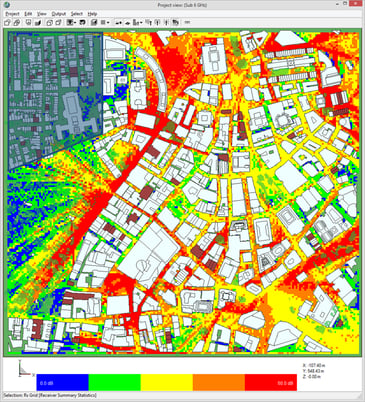
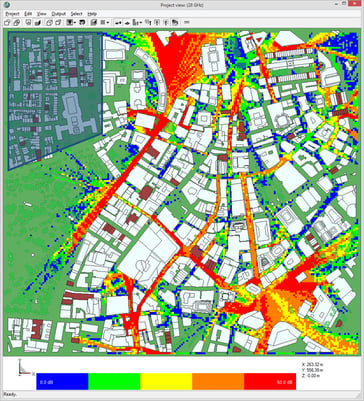
Comparison of Downlink Coverage (SINR) for Sub-6 GHz (left) vs. 28 GHz (right) in 5G simulation software
Using Wireless InSite, Remcom analyzed SINR and throughput for a 5G deployment in a dense city scene. Wireless InSite’s ray-tracing model was used to analyze signal propagation at 28 GHz as well as a mid-band sub-6 GHz frequency, comparing losses from multipath and shadowing from structures, penetration through foliage, and differences in path loss and atmospheric attenuation.
Massive MIMO antennas were used at both frequency bands, with reasonable assumptions applied at each band regarding the carrier bandwidths, numbers of antenna elements, spatial multiplexing, and modulation and coding schemes for uplink and downlink. Base stations at the two bands were co-sited in order to establish a baseline of additional base stations that would be required to achieve comparable coverage at 28 GHz. Remcom then applied massive MIMO beamforming techniques and performed throughput analysis, comparing uplink and downlink coverage results for mmWave versus the sub-6 GHz band and using these comparisons to inform the discussion on potential requirements for mmWave deployment.
